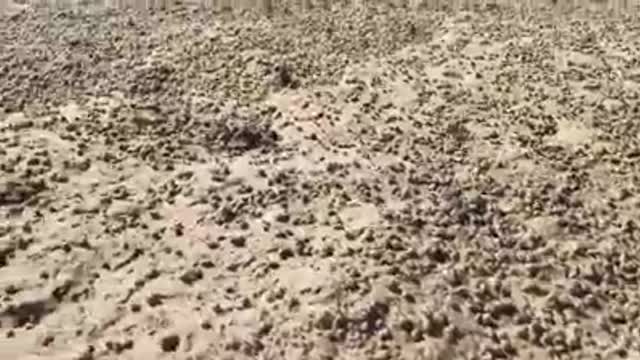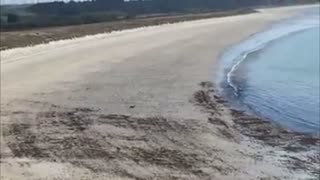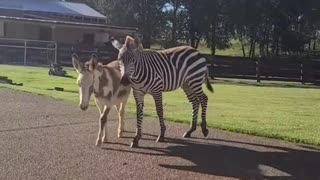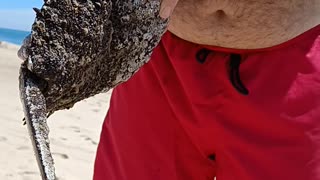Premium Only Content

Thousands Of Little Crabs Scamper Across Beach
What’s that on the beach? For the squeamish, they might on first glance appear to be spiders. Upon approaching them, they run away in unison. But they’re not spiders though - they’re tiny crabs, thousands of them. This demonstrates that crabs are a lot smarter than we think they might be. These bottom scavengers at low tide are aware of possible predators, as they have many. Since they make a tasty snack for seagulls and other waterfowl and are hunted by humans who may gather them up as souvenirs, they must take evasive maneuvers to avoid becoming a meal or ending up in a decorative acrylic ashtray. It’s captivating to watch these crustaceans scrambling for safety as they move together like flocks of starlings. They seem to be connected in their movements as though there is a form of communication that ties them together.
There are several varieties of crabs that live in the tidal regions. Most of them are too small to be considered for food or sport. Larger crabs are highly sought after for fine cuisine. They make up a delicious part of a seafood menu. On the East Coast, Maryland is famous for their crabs. In the North Pacific, there are several varieties that are delicious and beloved at restaurants throughout the world. From the Dungeness crabs from along the coasts of Washington and Oregon, to snow crabs and the giant king crabs caught on deep sea fishing boats in Alaskan waters along the Aleutian Chain. It’s one of the most dangerous jobs. Seasons are short and highly regulated to prevent over-fishing. This leads to competitiveness on the seas among commercial fishermen. These factors drive up the costs of these delicacies. Seafood lovers are willing to pay the price though.
Crabs are an important part of our ecosystem because they clean up detritus and carrion from dead fish and other sea creatures. Think of them as “bugs of the ocean” because their role is similar to their land creature counterparts with exoskeletons. Unlike spiders and other land critters, they are typically non-venomous (with the exception of a few varieties). Most crabs, even tiny ones like in this video, can inflict a painful pinch though - even enough to break the skin and draw blood in a human. Mostly, they use their pincers to aid in grabbing and tearing their food so they can easily bring the scraps to their mouths, however they can also use them as defensive weapons.
-
 3:05
3:05
Viral Tab Animals
5 years agoDeer Runs Across Empty French Beach For Swim In Ocean
161 -
 0:28
0:28
ViralHog
4 years ago $0.07 earnedZebra Got a Little Scared
4011 -
 0:41
0:41
ViralHog
4 years ago $0.13 earnedBear Playing in a Little Pool
638 -
 0:17
0:17
FatGuido
4 years agoA little beach buddy
108 -
 1:56
1:56
ViralHog
4 years ago $0.01 earnedEscorting Deer Back Across the Bridge
5161 -
 1:00
1:00
WildCreatures
4 years ago $0.79 earnedGigantic hermit crab cleans the beach in Belize
6.5K11 -
 0:16
0:16
ViralHog
5 years ago $0.80 earnedMoose Meanders Across Hiking Trail
1.9K1 -
 1:06:33
1:06:33
TheCrucible
2 hours agoThe Extravaganza! EP: 27 with Guest Host: Rob Noerr (8/26/25)
11.4K2 -
 LIVE
LIVE
GloryJean
8 hours agoHide & Seek Tournament w/ Spartakus, StoneMountain64 & Stevie
80 watching -
 LIVE
LIVE
Reidboyy
5 hours agoNEW FREE FPS OUT ON CONSOLE NOW! (Delta Force = BF6 with Killstreaks)
24 watching